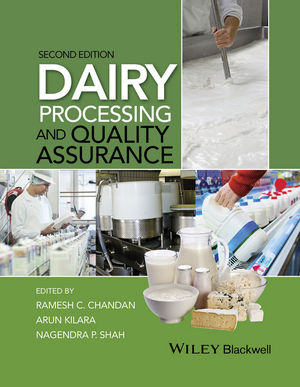Live long and prosper
Packaging supplier knows what dairy processors need
Tetra Pak conducted 86 studies that involved interviewing 40,000 dairy customers in more than 60 countries in 2016.

Carla Fantoni is vice president of communications for Tetra Pak U.S. and Canada. The packaging supplier, based in Sweden, takes a collaborative journey with its customers to help them find the proper formula, format and manufacturing process.

Chris Gorman is the safety and environment manager at Tetra Pak’s pilot plant in Denton, Texas. “This is one of the cleanest factories you will ever see,” he said.


Tetra Pak founder Ruben Rausing had a basic philosophy: “a package should save more than it costs.” The 65-year-old company, based in Lund, Sweden, still lives by that point of view. In 2015, it sold 184 billion units of 136 different types of packages.
Dairy Foods learned more about the company when it visited Tetra Pak’s North American headquarters in Denton, Texas, during a day-long event for the media in October. Company executives talked about their research on the over-60 consumer market and provided tours of the facility’s pilot plant and factory.
The world’s first aseptic packaging
Tetra Pak has innovated since its early years, creating light, paper-based packaging at a time when most milk and juice products shipped in heavy glass bottles. In 1964 Tetra Pak launched the world’s first aseptic packaging that allowed products to be preserved for several months, making sanitary food and beverages more widely available, said Carla Fantoni, vice president of communications for Tetra Pak U.S. and Canada.
Owned by the same family for its entire history, Tetra Pak built the Texas facility in 1984. It is one of six locations in the United States and Canada. Whether creating new or redesigned packaging for dairy and beverage products, or helping to formulate beverages — the company’s other major offering — Tetra Pak takes a collaborative journey with its customer down a five-step path: diagnosis, discovery, refine, deliver, evolution, said Libby Costin, vice president of global marketing.
“How can we improve the outcomes, and therefore the marketability and salability, of our products?” she said. “We don’t think from the beginning about what we want to sell. We think about what challenges the customer is facing.”
Tetra Pak and its customers examine what other products are available in the marketplace and what’s trending. Then they attempt to quantify the opportunity size for new product concepts, Costin said.
“We think this is an opportunity area, now we’ll develop a concept around it,” she said. “Then we test the concept [in the pilot plant], create a prototype package and reposition the brand.”
Tetra Pak conducted 86 studies in 2016
As a global company, Tetra Pak is well-positioned to share success stories from other markets with its customers. The firm also undertakes significant research on product development through a variety of means and methods, including ethnographic research like the over-60 study, Costin said. In 2016, the company conducted 86 studies that involved interviewing 40,000 dairy customers in more than 60 countries, she said. “We can quantify the size of opportunities through our market studies.”
Once a package product is pilot-tested and ready to go to market, the company’s noisy factory whirs into action, with three shifts, five days per week and occasional weekend work, said Chris Gorman, the safety and environment manager who has been with the company for 30 years.
Tetra Pak uses bleached paper with a clay coat on the print side to provide a smooth surface, and water-based ink in the four process colors of magenta, cyan, yellow and black plus any spot colors the customer wants, Gorman said.
“With these first four colors, you can come up with any color in the spectrum, except for the one the customer usually wants for their logo,” Gorman said wryly. “So we’ll use the spot color.”
Building an aseptic carton
The packages bind together from rolls of paper, plastic and very thin aluminum that creates an oxygen barrier. Once the ink is dried on the paper, packaging materials are laminated, scored so they will fold and run through a slitter that cuts them into individual reels, where they are placed on pallets to ship to the customer, Gorman said.
“This is one of the cleanest factories you will ever see," he said. “We’re under a lot of [Food and Drug Administration] guidelines. These are food packages. We’ve got people coming in every other week, making sure we’re doing our jobs right. They keep us on our toes. That’s what the customer wants,” Gorman said.
Looking for a reprint of this article?
From high-res PDFs to custom plaques, order your copy today!










